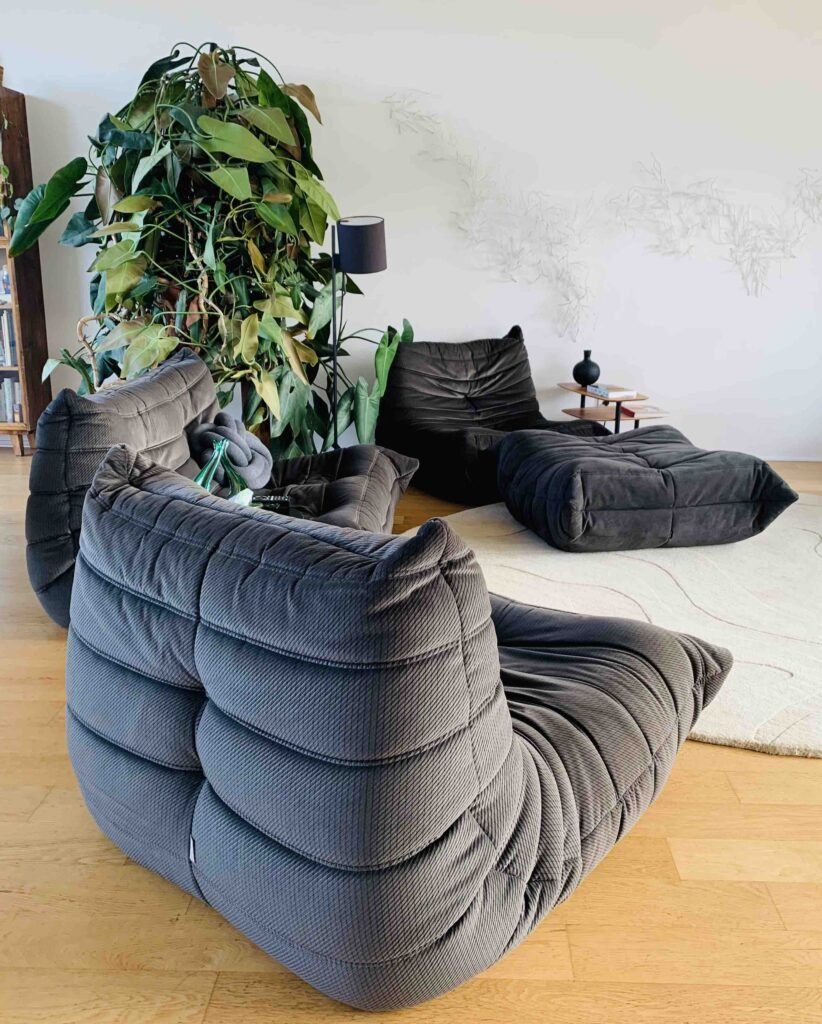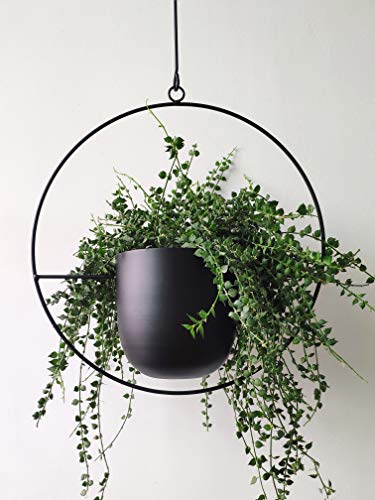Table of Contents
Plants for Minimalists
Plants add colour, texture, and life to a room. They can also purify the air, improve your mood, and boost your immune system. In short, plants are a great way to spruce up your place, but they can also be really hard to take care of. If you’re not careful, they can become unsightly wilted things that even die.
Some of the best varieties of plants for minimalists include succulents, cacti, umbrella plants, and philodendrons. These varieties are low maintenance, require little water, and can thrive in a variety of conditions while adding a wonderfully graphic pop of green to your space.
Philodendron domesticum, also known as the spadeleaf or common philodendron, is a species of flowering plant from the family Araceae. It is native to the Caribbean and South America. The spadeleaf plant is a fast-growing vine with air roots that can reach over three metres in length. The leaves are large and heart-shaped, with a glossy green surface. The plant sometimes produces small, white flowers that bloom in the spring, although this might be less common in indoor houseplants.
The Philodendron domesticum is the perfect plant for busy people or minimalists. It’s easy to take care of and doesn’t require a lot of attention. Plus, it’s a beautiful species that commands attention with its large, graphical foliage.
Here’s everything you need to know about how to care for Philodendron domesticum, why it’s the perfect plant for a minimalist household, and all the benefits of having plants at home.
Why Plants Are Great for Your Home
Plants are not only aesthetically pleasing, but they also have many benefits for your home. They help purify the air, increase humidity, and can even help to reduce noise levels. Plants have been shown to boost mood, concentration, and memory. They can even help reduce stress levels and promote relaxation.
Plants Improve Air Quality and Humidity
Plants play an important role in purifying the air and improving air quality in our homes. They do this by absorbing harmful gases and pollutants from the air and releasing oxygen back into the atmosphere.
Studies have shown that plants can remove up to 87% of volatile organic compounds (VOCs) from the air in just one hour. VOCs are a type of air pollution that can cause a variety of health issues, including headaches, dizziness, and respiratory problems. Pollutants like benzene, formaldehyde, and trichloroethylene come from a range of sources, such as cleaning products, cooking, and even off-gassing from building materials.
Ew, did my walls just fart?
In addition to removing harmful gases and pollutants, plants also help to improve air quality by increasing humidity levels. This is notable because healthy humidity levels help prevent the spread of viruses and bacteria.
So overall, having plants in your home can improve air quality and help you breathe easier. But plants also help to humidify the air, too, which can be super beneficial during the dry winter months when you have the heat on at home. And hey, that’s great for your skin.
Plants Are Natural Mood Boosters
Plants have long been known to have a positive effect on mood and mental health. Numerous studies have shown that being in nature or just looking at plants helps reduce stress levels, improve focus and concentration, and promote a general sense of well-being. Looking at plants is easier than decluttering to lift your mood, right?
In terms of well-being, one of the key ways in which plants improve mental health is by reducing stress levels. Exposure to nature has been shown to reduce levels of the stress hormone cortisol, as well as to decrease blood pressure and heart rate. In one study, participants who tended to plants showed lower levels of stress and anxiety than those who did word processing. Good thing I’m looking at a plant while I write this, huh.
In addition to reducing stress, plants can also help to improve focus and concentration. They simply allow us to connect with the natural space we all come from. In today’s fast-paced, technology-driven world, it’s so easy to feel disconnected from nature without even noticing. A natural environment, such as one with green foliage, can subconsciously remind us of our place in the real world.
Another reason plants are good for mental health is that they require us to take care of them. Without any sense of responsibility and accountability, depression and worse lurk right around the corner. Having something to enjoy, something which calls to us, needs us, can be immensely helpful. Even if it is as something as small as a goldfish or a plant.
How to Care for Philodendron Domesticum
Ok, you say, you get it now. Green is good. What’s up with this plant then, and how do I care for Philodendron domesticum?
There are many types of Philodendreae out there, but I picked the domesticum to feature because I have had it for over 20 years and can say it really is truly easy to care for. Here’s what I’ve learnt over the years.

Watering Your Philodendron Domesticum
Spadeleaf philodendrons are typically found growing in moist, shadier areas with indirect sunlight where they prefer warm temperatures. Their monstrous leaves can grow over 12 inches long, so they need some degree of moisture for such a large surface.
These plants can be grown in containers or in the ground, and do not require much care. They do need water though, and as with all plants, it’s important not to shock them with ice cold tap water when watering.
Use tepid water and avoid getting the leaves wet, as this can cause them to develop brown spots. Finally, let your philodendron dry out in between waterings. Over-watering will cause the leaves to turn an oddly bright yellow and then die.
As with most of your houseplants, you can train them to accommodate your schedule. You read that right! For over a decade, I was busy flying all over the world for my work as a tech localisation leader. I trained all of my plants to be ok without water for up to 2-3 weeks in my absence.
Sound crazy? It’s true, plants really can adapt and the care for Philodendron domesticum is particularly easy given she tolerates long periods with no water.
If you slowly start stretching out your watering times from three days to one week to ten days, and so on, the plant’s roots will organically adapt to the situation. Today, all of my numerous houseplants are fine for at least 21 days without any water at all—even in the summer. Their roots have taken to my training over time and know that when I give them water, they better utilise it to the max.
Of course, you absolutely cannot do this with a new plant you’ve brought home. As with people, you need to make friends first and prove your worth. But once you’ve given the plant what it needs, you can start training it.
If you just brought home a baby or mid-size Philodendron domesticum, give it water when its top inch or so of soil is dry. Easy, right?
Wait, What About Soil?
Technically speaking, Philodendron domesticum is a tropical plant that likes warmer temperatures and thrives in higher humidity. So the ideal soil for this plant is a well-drained, humus-rich potting mix. The mix should be loose and airy, and should hold moisture without becoming soggy. A spadeleaf philodendron will also do well in a soil-less growing medium, such as peat moss or coco coir.
If you’ve no idea what any of that means and you just brought home a philodendron, let it sit in a neutral place first to acclimate. Not too bright, not too dark, and no drafts. These plants are very hardy, but they are a bit sensitive to new surroundings, so you might see some leaves turn colour and die after you bring it home. Don’t be worried.
Give it a day or two to acclimate, then re-pot it into a proper plant container. Choose a container that’s not too big. Ditch the plastic potter it was in, and give it some room to breathe and settle into its new home. You can then water it and move it to its new spot.
Re-pot your plant every two to three years if you’d like her to grow to a large size. As she gets larger, give her a moss stake or two for support, to lean on and climb around.
If your Philodendron domesticum has reached a large size and you’ve stopped re-potting her like mine, you’ll still want to top off her soil every couple of years. Basically, when I am pruning and re-staking my philodendron (which has a tendency to climb across the floor if left to her own devices), I add a couple of inches of fresh soil to her pot. This provides her with fresh nutrients, allowing me to skip buying a fertilizer.
Location and Light for a Philodendron Domesticum
The spadeleaf philodendron loves a bright spot with indirect sunlight. Keep it out of direct sun, as this will burn its big leaves. Also avoid keeping it in dark places. It’s quite tolerant of shade, but if it’s too dark all the time, it just won’t flourish into the grande beauty it’s capable of becoming, and you’ll also see a lot of leaves turn brown and fall off.
My own Philodendron domesticum has lived in five different homes with me over the past 21 years (maybe she’s my true life partner, who knows). In each place I lived in, I kept her in a south-side facing room with bright light, but not directly in the sunlight. She has truly taken centre stage in every flat due to her imposing size, and she appears to love the brightness.
Whatever your room layout may be, keep your philodendron out of drafts, whether they’re hot or cold. In terms of room temperature, she’ll do fine in a range of 18–30°C.
Do You Need Fertilizer to Care for Philodendron Domesticum?
You generally do not need to fertilize newly potted plants. They get what they need from the fresh soil. When it comes to fertilizing a Philodendron domesticum, there are a few things to keep in mind. First and foremost, it is important to understand if the plant actually needs to be fertilized. Over-fertilizing can be harmful, so it is important to find the right balance.
Philodendron domesticum, or the common philodendron, is a hardy houseplant that really does not need much fertilizer. I have not given mine fertilizer in years, yet she is huge and continues to thrive.
If you re-potted your baby in the last year but feel that it’s not growing as vigorously as it could be, you can fertilize it about once a month during the spring with a half-strength solution of liquid fertilizer or by poking a few plant food spikes in the soil. However, be sure to stop fertilizing during the fall and winter months. The plant goes dormant and absolutely does not need the extra nutrients during this time.
Problems in the Care for Philodendron Domesticum
Too Much Water
Philodendron domesticum is a popular houseplant that is known for its easy care and durability. However, like all plants, it can be susceptible to a couple of problems, one of which is root rot. Watering your spadeleaf excessively can lead to root rot, a serious condition that will kill your plant if not treated promptly and correctly.
The good news is you can prevent root rot by using drainage in your pot so your plant isn’t sitting in water, and making sure you’re letting your plant’s soil dry out in between waterings. I only water my philodendron every three to four weeks, for example.
Some signs you may have roots rotting are when you start seeing leaves turn bright yellow and then wilt. This is the most obvious sign that something’s wrong.
Leaves might also start to droop or fall off completely, and the stem of the plant might turn brown or black. If you see any of these signs, you need to take action quickly.
Take the plant out of its pot and inspect the roots. Cut off the affected roots and replant the plant in fresh soil. Make sure the bottom of your pot either has drainage holes, or add a few layers of drainage pebbles. Do not re-water the plant right away, let it dry out a bit.
The sooner you take action, the better your chances are of saving the plant.
Pests
In 21 years of experience with my own giant plant, I’ve never once had pests on my Philodendron domesticum, and it seems pretty resistant to them. Still though, you’ll want to keep your eyes peeled for any spider mites hiding out in your foliage, or mealybugs.
Wiping down the large leaves of the spadeleaf philodendron and keeping them clean helps keep pests at bay, too. Plus, it keeps your baby looking even more beautiful.
Toxicity
While the common philodendron does a great job at filtering toxins from the air in your home, you do need to keep in mind that it is toxic itself.
If you have cats, dogs, or toddlers in your household, don’t let them play with or chew on any parts of the plant, or come into contact with its sap.
Conclusion
All in all, the common philodendron domesticum is a fantastic plant for the minimalist household with its large-leafed, graphical aesthetic. It’s easy for beginners with its low water requirements, and it can accompany you for many years, if not decades like mine.
It’s not difficult to care for Philodendron domesticum. Drainage, water every few weeks, and bright, indirect sunlight are pretty much all she needs. The plant is not only easy to care for and generally low-maintenance, but it also has a number of benefits including its ability to filter out harmful toxins and its resistance to pests and diseases. All in all, a great plant for those who want to keep things simple at home.





















Leave a Reply